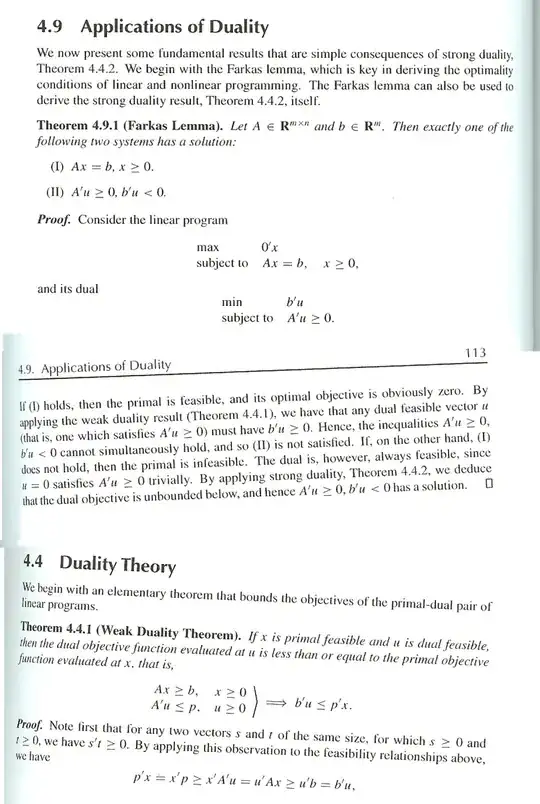I've attached an image of my book (Theorem 4.4.1 is at the bottom of the image). I need help understanding what this book is saying.
In the first sentence on p.113:
"If (I) holds, then the primal is feasible, and its optimal objective is obviously zero",
They are talking about the scalar value resulting from taking the dot product of the zero vector and $x$, right? That's obviously zero. Because if they're talking about $x$ itself, then it makes no sense. Okay.
Next sentence:
"By applying the weak duality result (Theorem 4.4.1), we have that any dual feasible vector $u$ (that is, one which satisfies $A'u \ge 0$) must have $b'u \ge 0$."
I don't understand this sentence. How is the weak duality result being applied? I can see that $Ax = b, x \ge 0$ matches up with $Ax \ge b, x \ge 0$, but I don't see where $b'u \ge 0$ comes from. I would think that the only thing you could conclude from Theorem 4.4.1 is that $b'u \le 0$ since p = 0 in that problem.
Thanks in advance.
